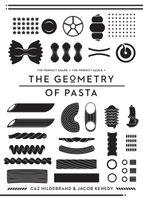Advertisement
Gnudi and Malfatti
By Caz Hildebrand and Jacob Kenedy
Published 2010

These are, perhaps, two distinct pastas. Gnudi (‘nudes’) are smaller (about 2cm in diameter) and almost perfectly round, being made from a fairly firm dough that is easy to mould. Malfatti (‘badly made’) are, as their name suggests, more irregular as they are made from a softer dough that is hard to shape. They are also larger, 3–4cm across.
Both are simple types of dumpling, normally based on ricotta bound together with egg and flour or breadcrumbs. They represent the origins of ravioli: they are essentially ravioli without wrappers, the filled pasta having come about as a marriage of pre-existing dumplings with the newer invention of pasta. These early dumplings, made from ground meat, were a popular first course in Renaissance Italy. Their modern counterparts are found across the country (gnudi particularly in Tuscany, and malfatti in Lombardy), and are best in the springtime when ricotta is at its peak.



